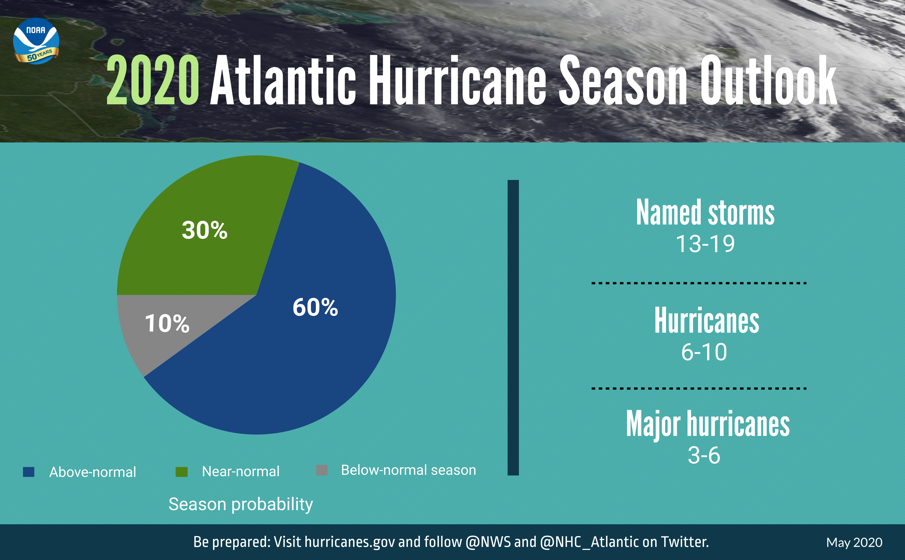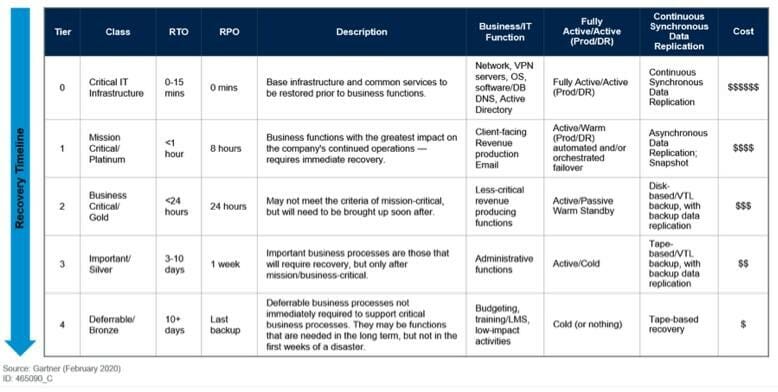
Hurricane-Proof Your Disaster Recovery
What’s coming
Hurricane season is already underway, and experts believe we’ll see a busy hurricane season in the Atlantic. According to forecasters with NOAA’s Climate Prediction Center, there’s a 60% chance of an above-normal season.

A summary infographic showing hurricane season probability and numbers of named storms predicted from NOAA’s 2020 Atlantic Hurricane Season Outlook. Source: https://www.noaa.gov/media-release/busy-atlantic-hurricane-season-predicted-for-2020
Companies in high-risk areas are only one hurricane away from outages, service disruptions, and major financial and technical consequences of prolonged downtime. This makes maintaining availability a mandatory focus for IT organizations. With that in mind, here are some ways to hurricane-proof your IT this season.
Ensure executive sponsorship and organizational alignment
Executive buy-in is critical for both business continuity (BC) and disaster recovery (DR). If executives and the entire organization are fully committed, then it’ll be easier to unlock the budget and resources necessary to resume operations after a hurricane or any major disaster recovery scenario.
Update RTO and RPO requirements
In today’s always-on era, your customers, partners, and employees are expecting 24/7 availability. It’s probable that your previous SLAs aren’t meeting the current demands of your business. In preparation for any disaster recovery event, especially hurricanes, you need to update your RTOs and RPOs for all application tiers.
Gartner provides an effective planning matrix that helps you define your application tier, RTO/RPO requirements, and the solution requirements for each tier.

Source: Aligning Recovery Tiers with Recovery Strategies from Gartner’s – 16 Tips to Enhance Your IT Disaster Recovery Program – Published 28 February 2020
Plan for loss categories, not just single events
Hurricanes vary in severity and it’s difficult to solely rely on forecasts. There are vastly different requirements and consequences from a Category 1 to a Category 5 hurricane. Don’t base your entire plan on one single expectation—make sure to plan for various scenarios depending on the severity of the hurricane. For example, your organization may experience a brief loss of service or a complete loss of the site. You’ll have to act differently and drive different protocols, so planning for every scenario is critical.
Continuous DR Testing
Performing a failover test once a year isn’t enough for a resilient organization. Before even performing a test, you must create a BC/DR plan that spans across departments and key stakeholders. Once defined, perform a plan review with all stakeholders and address any gaps and potential risks. Once a step–by–step review is performed, perform a full DR simulation across the entire organization. Frequent DR testing will lower your vulnerability when a real disruption occurs.
Resilient Infrastructure
Many organizations are realizing that on-premise sites for DR aren’t the most reliable or economical strategy. Secondary sites require capital investments, additional resources, and maintenance costs that reduce your team’s time, resources, and budget. In the event of a hurricane, having a secondary site too close to your main data center is a major risk for outages across both sites.
IT leaders are moving DR operations to the cloud, unlocking economic benefits but most importantly: reliability. Using the public cloud as a DR target site unlocks a vast network to protect against local outages.
Conclusion
We hope there aren’t any hurricanes to prepare for, and as always, ensuring your employees are safe is still the priority.
But, by taking the right steps your business should be resilient when facing any disruption event, even natural disasters like hurricanes. For a deeper dive into hurricane preparedness, watch the Hurricane-Proof Your Disaster Recovery Plan on-demand webinar.
 Andy Fernandez
Andy Fernandez 

